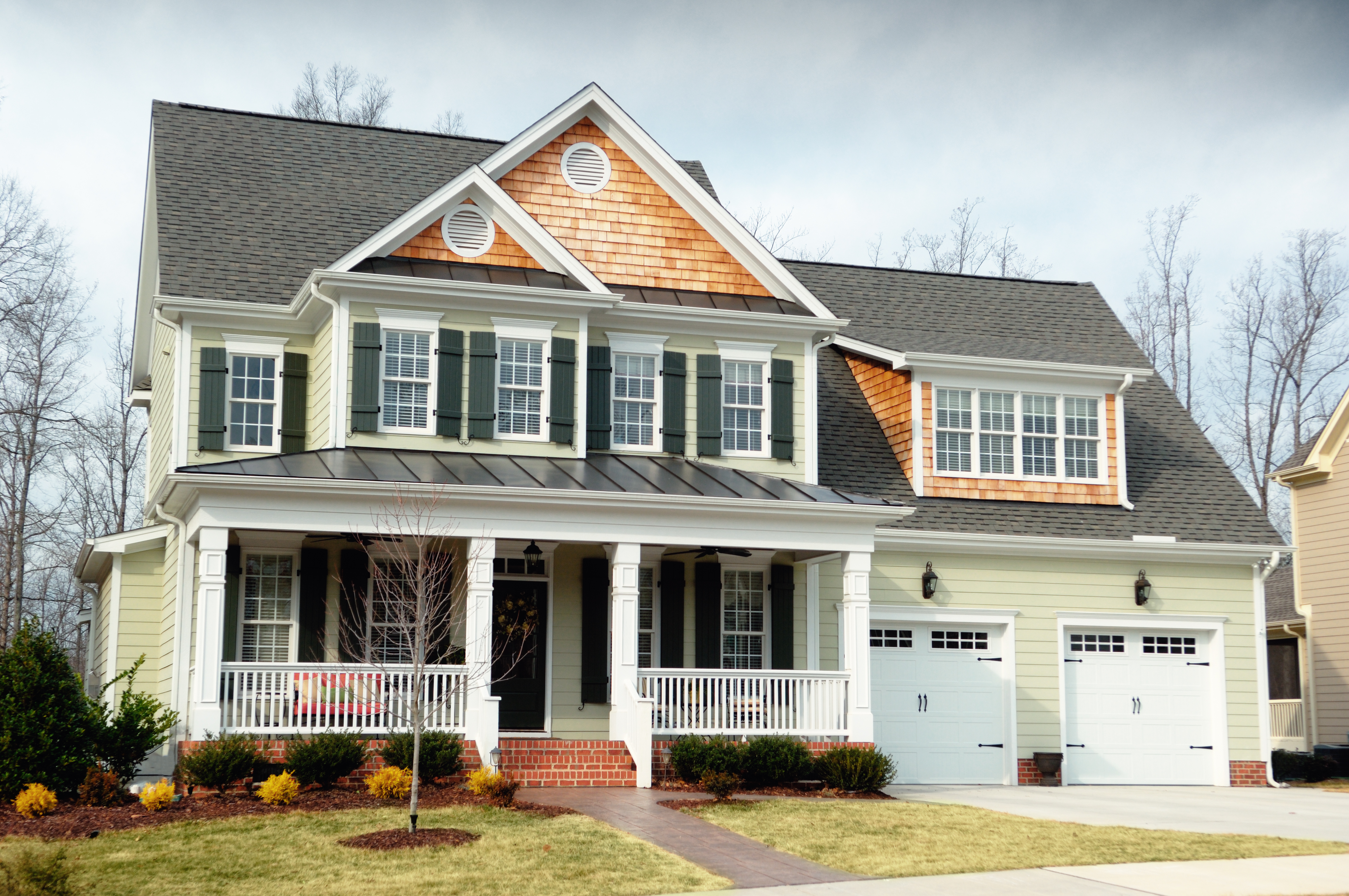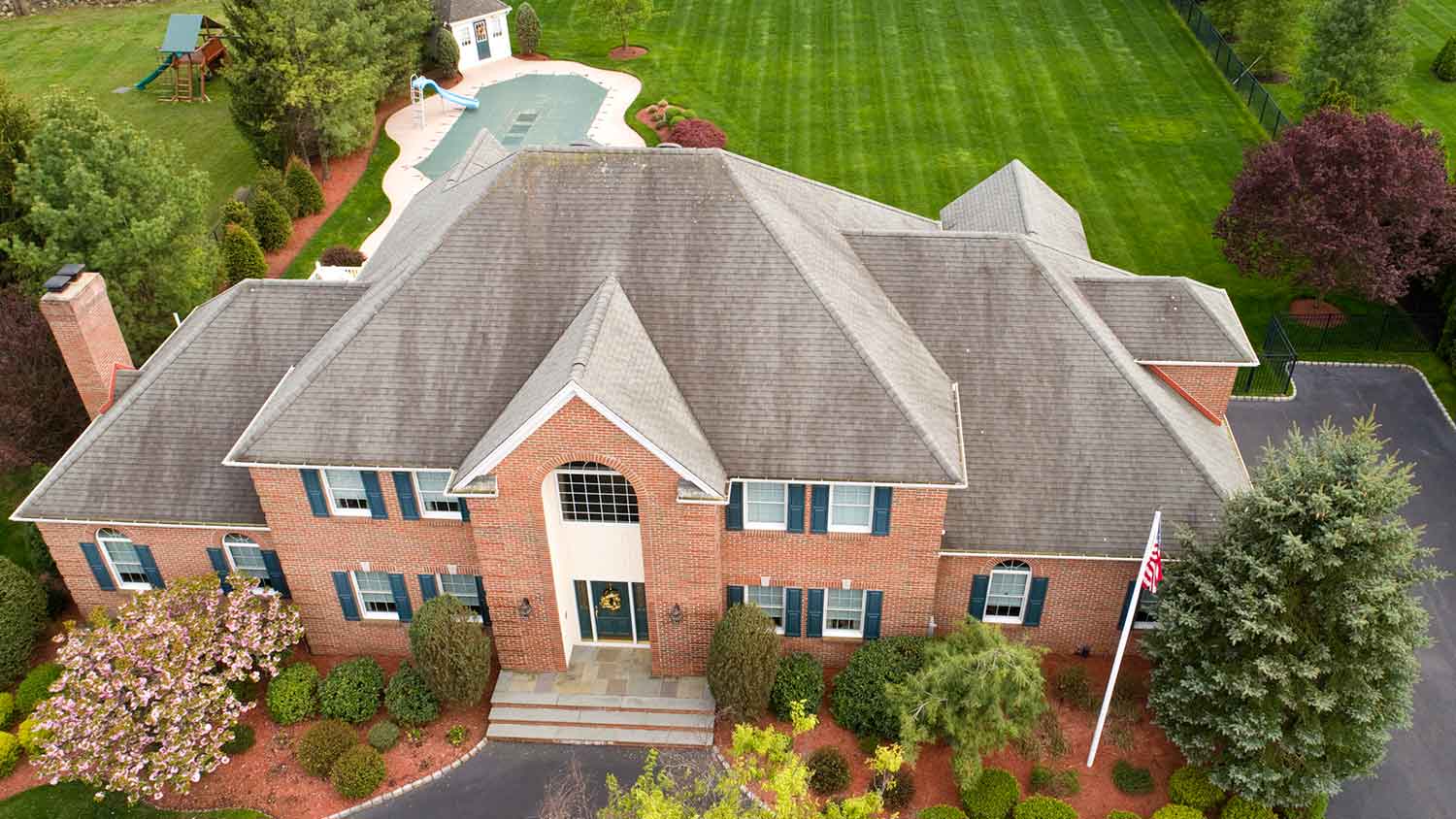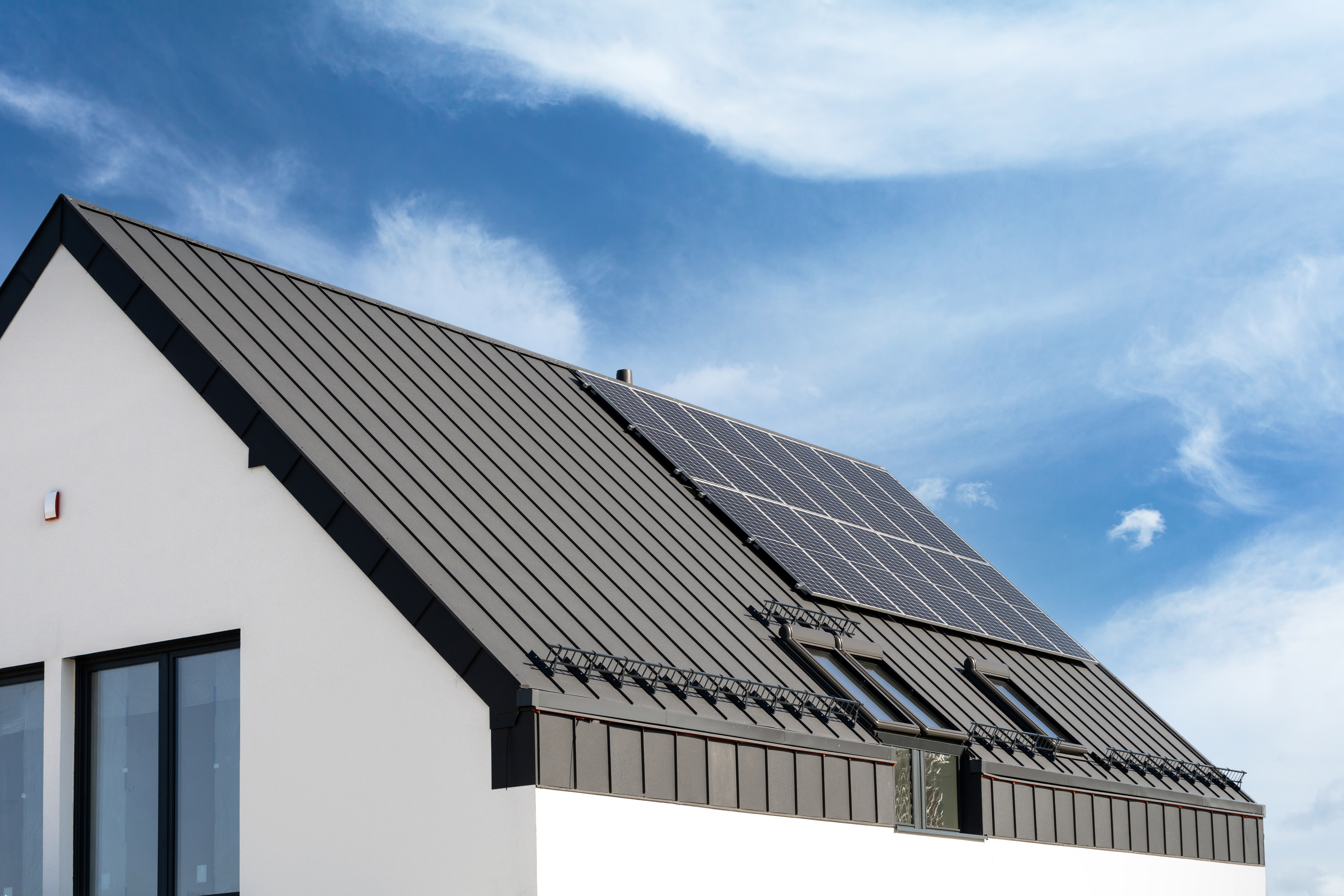
Dealing with a visibly damaged roof or leak? Learn about roof repair costs in Columbus to see how much you’ll need to budget for a permanent solution.
Get hip to this popular roof shape


A hip roof slants downward and creates a symmetrical shape.
This style of roof holds up well to rain and snow.
Complex construction and material costs make this an expensive roof style.
Limited attic ventilation can cause higher temperatures and moisture issues.
While you may not know how to define a hip roof off the top of your head, chances are you have seen many hip roofs in your lifetime. So, what is a hip roof, exactly?
A hip roof is a popular type of roof with all sides sloping downward toward the walls. These slopes meet at a ridge or a single point, which creates a symmetrical and stable structure. Learn more about hip roofs, including how they’re used and their pros and cons.
Hip roofs are found on American homes in every region—and they’re popular for good reason. This roof design style involves all sides sloping downward toward the walls, often with a gentle incline. This shape forms a ridge or point at the top. Because a hip roof has four sloping sides that meet at the corners, it creates a symmetrical and stable structure. The sturdiness of this particular roof style is why it’s especially common to come across in regions with high wind or heavy snowfall. The sloped sides create better resistance to strong winds and shed rain and snow easily.
There is more than one type of hip roof you can choose from for your home. These are some examples of common hip roof styles:
Simple hip roof: The standard design with a single ridge at the top.
Pyramid hip roof: All sides slope to a single point at the top.
Cross hip roof: Two hip roofs intersect at a right angle.
Half-hip roof: The lower portion of the roof gable is replaced with a hip, creating a shortened gable.
Dutch hip roof: Features a small gable at the end of the ridge, with the rest of the roof being hipped.

When researching whether or not a hip roof is right for your home, consider the main features of a hip roof:
Sloping sides: All four sides of the roof slope downward toward the walls, which gives the home a symmetrical and balanced appearance.
Ridge or pointed peak: The sloping sides can meet at a ridge at the top or converge at a single point.
Wind resistance: The sloped design gives the roof resistance to strong winds, which makes it an ideal roof choice for areas prone to hurricanes or storms.
Snow and rain shedding: The angled sides also help snow and rain slide off easily, reducing the risk of water damage or roof collapse under heavy loads of snow and water.
Structural stability: The even weight distribution across the four sides enhances the roof's stability and longevity.
Before considering making any major structural choices for your home, it’s a good idea to mull over any potential advantages and disadvantages. The main advantages surrounding hip roofs are how stable they are and how well they hold up to weather events such as rain and snow.
Many homeowners also appreciate the symmetrical and balanced look of a hip roof. As an added bonus, hip roofs often create additional attic space that homeowners can use for storage.
On the downside, hip roofs are more expensive to build due to the complexity of the design and the additional materials required. Whether you’re building a new home or replacing a roof, because this style of roof demands more labor and expertise to construct properly, this can lead to higher labor costs.
You also limit your attic’s ventilation with a hip roof style, which results in higher temperatures and potential moisture issues and mold if you don’t maintain the roof properly. From a design perspective, hip roofs are fairly limiting and you can’t modify them much.
If you aren’t sure which style of roof is right for your home, you can always consult with a professional roofer near you to find the perfect fit. When choosing a roofer, it can help to ask friends and family for referrals and collect multiple quotes.
From average costs to expert advice, get all the answers you need to get your job done.

Dealing with a visibly damaged roof or leak? Learn about roof repair costs in Columbus to see how much you’ll need to budget for a permanent solution.

Learn about roof replacement costs in Columbus and what factors are at play to budget accurately and make sure you’re getting a fair price.

A metal roof can defend your home against Ohio’s varying weather conditions. Learn how much a metal roof costs in Columbus, OH.

Are you trying to pick a soffit and fascia material for your roof? Here are 10 options for the right finishing touch on your house.

While there are various styles, the right roof drip edge type for your home will depend on your roof type and the rainfall in your climate.

You may wonder what fascia is on a house. Our guide explains what you need to know about this important part of your roof and what purpose it serves.